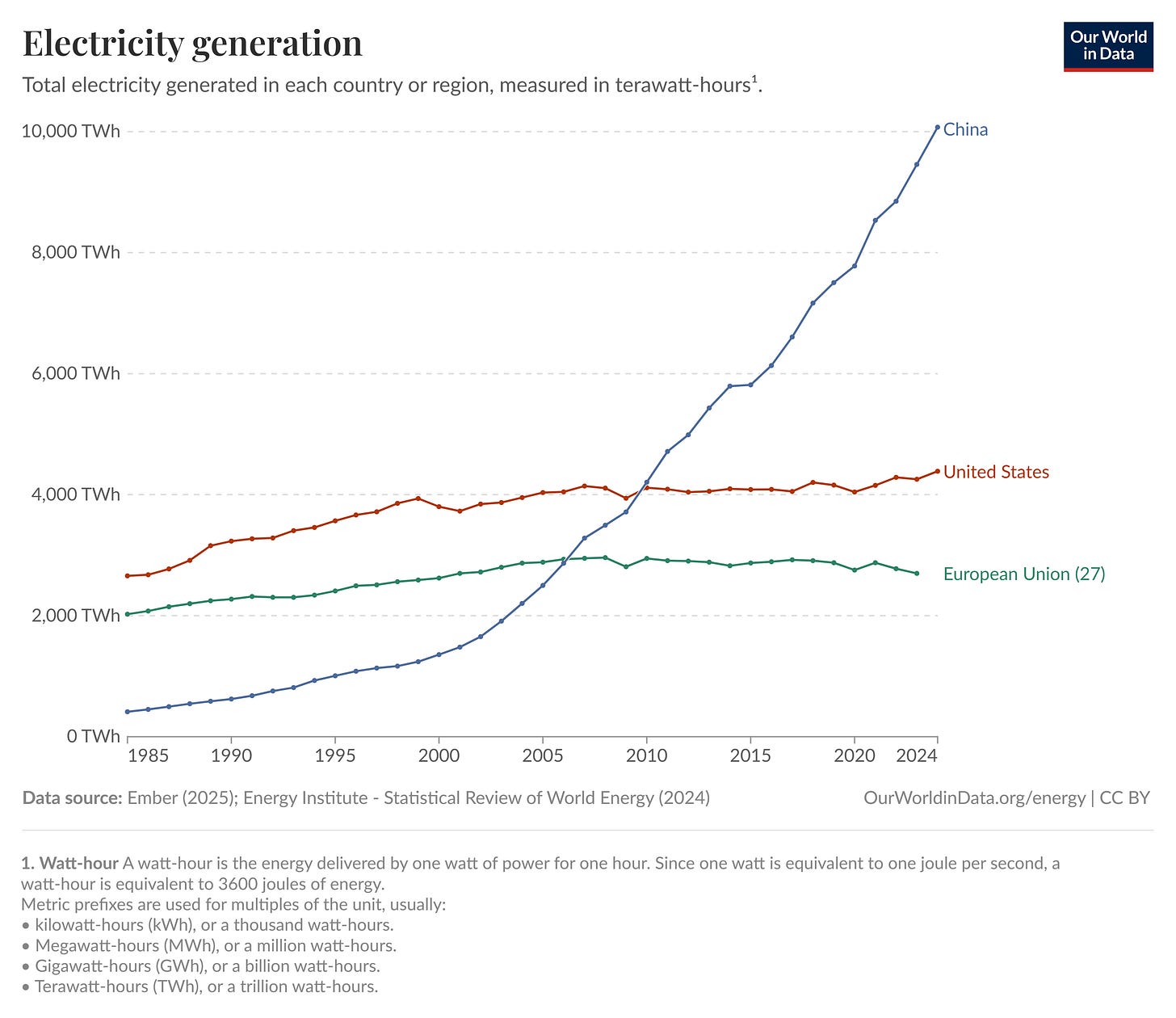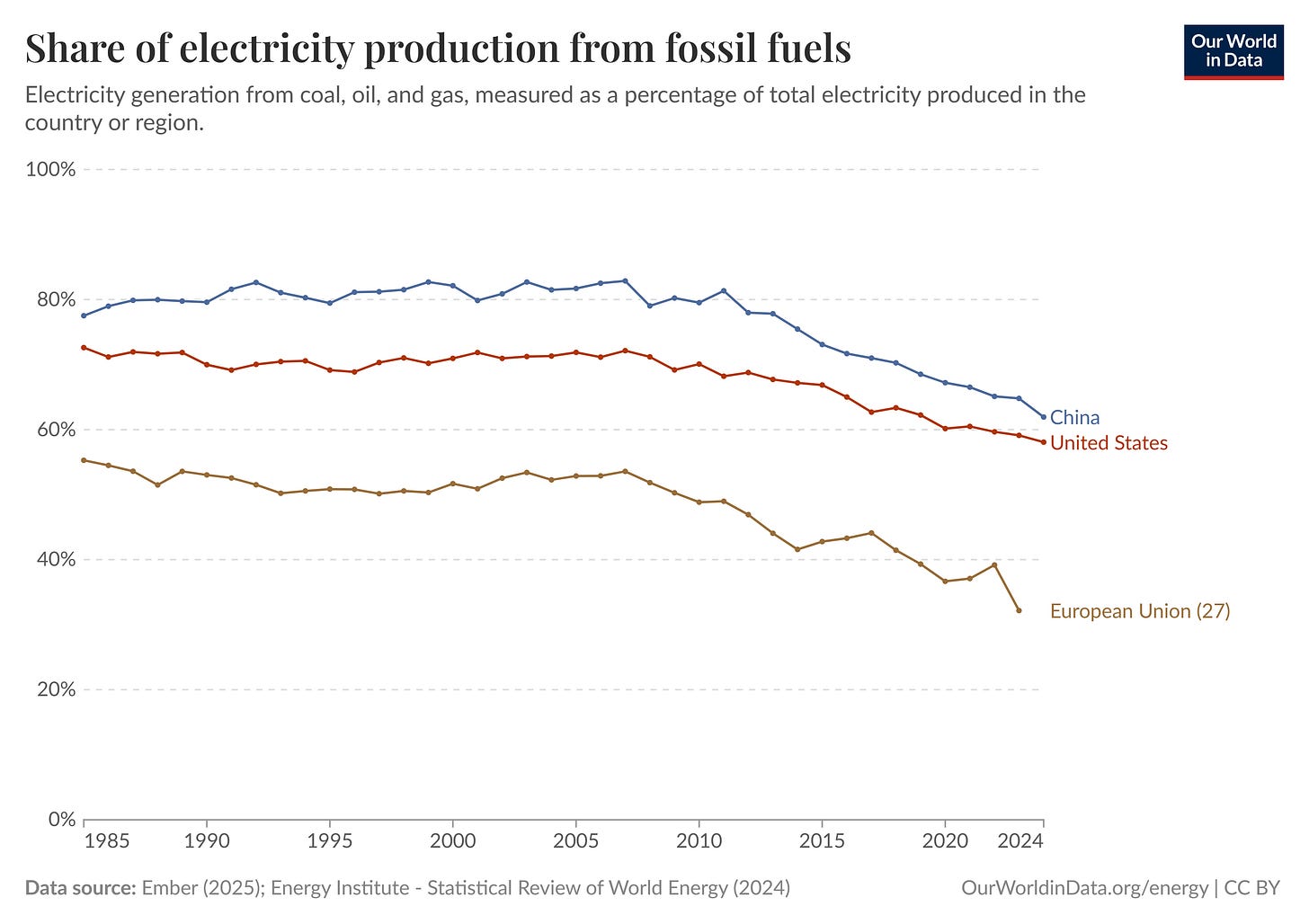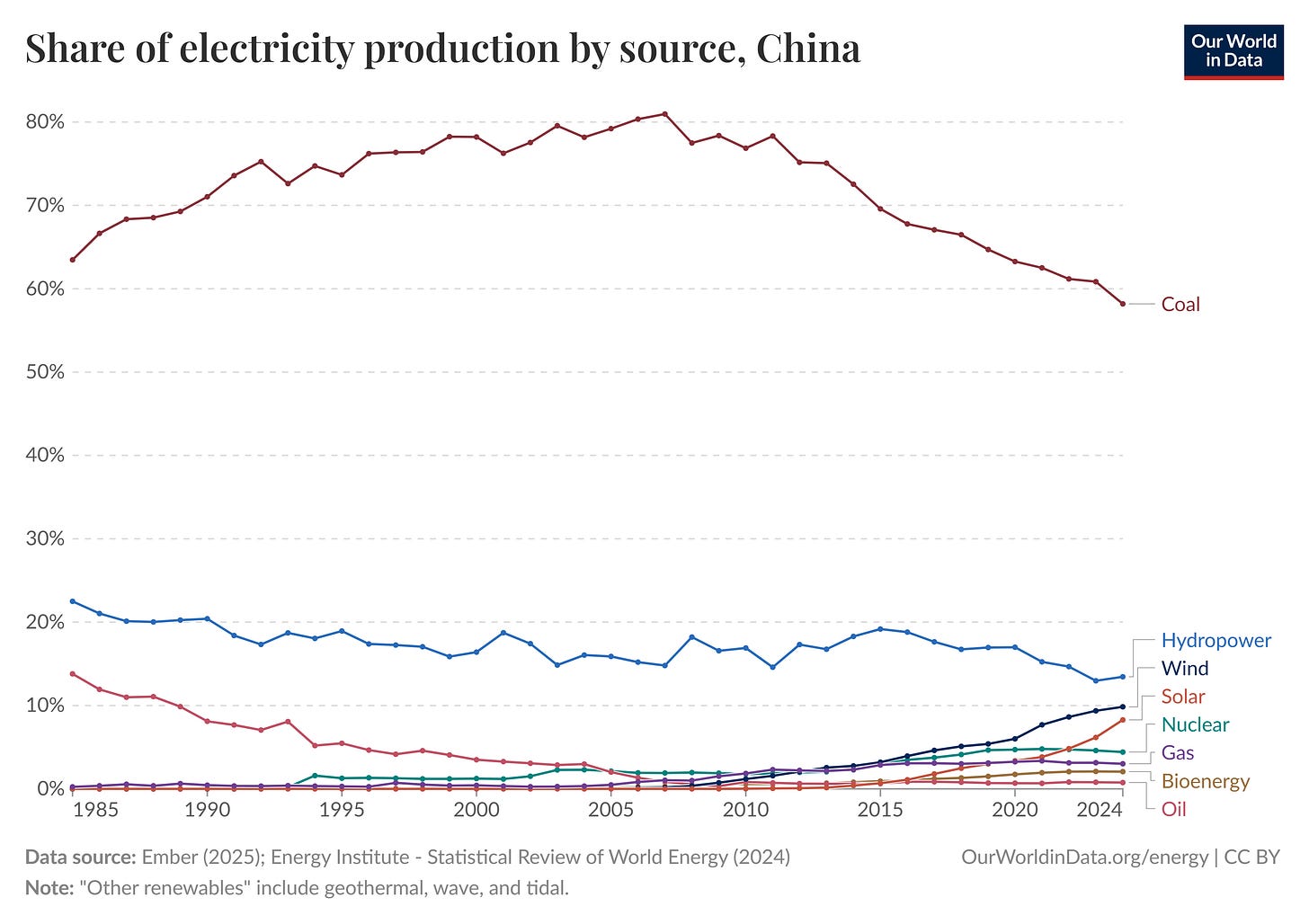News this week that Malaysia is building its sovereign AI ecosystem on a Chinese tech stack—Huawei GPUs and DeepSeek’s open-source LLM—caught my attention. Among the tradeoffs: lower cost, but higher energy intensity.
It got me thinking: The American and Chinese AI ecosystems reflect their national constraints. In the U.S., power availability is increasingly the limiting factor to data center buildout. In China, power supply is expanding rapidly, transforming its generation mix in the process.
A few striking data points:
In 2024, China generated ~40% more electricity than the U.S. and European Union combined.
Chinese generation surpassed the U.S. in 2010 and is now 2.3x greater, despite U.S. growth over that period.
It overtook the EU in 2007 and now produces over 3x more electricity.
In this context, “power efficiency” becomes a secondary concern. Cost and performance dominate.
By source, China’s coal buildout is visible—but so is its diversification. From 2010 to 2024, the share of fossil fuels in China’s power mix dropped from 81% to 62%, even as output doubled. The U.S. saw a smaller shift—from 70% to 58%—with gas replacing coal.
China in particular has pivoted away from fossil fuels (even with that big coal wedge), reducing the share of generation from fossil fuels from 81% to 62% between 2010 (the year it passed the US in total generation) and 2024.
The US share dropped from 70% to 58% over the same timeframe, albeit with cleaner burning gas displacing a lot of coal in the mix.
Looking only at renewables (excluding nuclear), China now generates ~33% of its electricity from solar, wind, hydro, and other sources—compared to 24% in the U.S.
So what does this mean for AI?
China has a power advantage. If access to energy becomes a bottleneck for AI growth, China holds the edge unless U.S. efficiency gains close the gap.
Gas is America’s bridge. The U.S. power sector has leaned on cheap, abundant gas to balance the transition. Sustaining that advantage may prove critical to supporting AI infrastructure.
China’s generation stack is evolving fast. Coal still dominates, but renewables are rising, and the fossil share may soon dip below that of the U.S.
The global AI race will be won with chips, models and the terawatts that power them.
𝘿𝙚𝙩𝙖𝙞𝙡𝙨:








